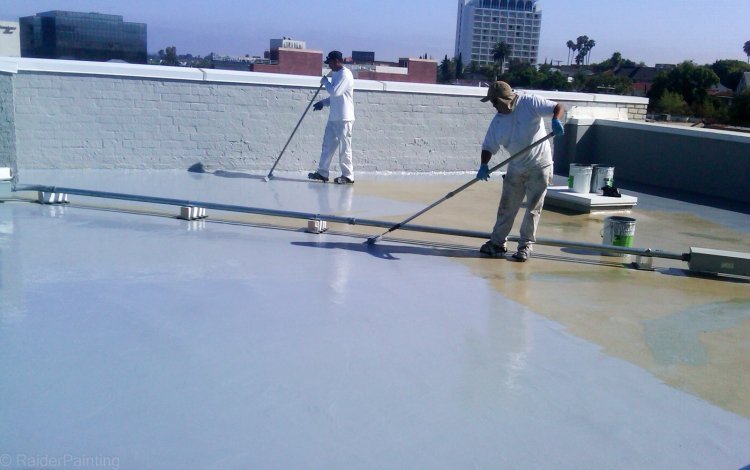What is the highest level of waterproofing?
Waterproofing isn't a one-size-fits-all solution. By understanding the types of water intrusion and the effectiveness of various methods, you can choose the best protection for your property. Remember, the right waterproofing approach can:
Waterproofing is the unsung hero of construction and everyday life. It's the invisible shield that protects our homes, foundations, and belongings from the relentless assault of moisture. But with a multitude of waterproofing methods available, choosing the right Professional Waterproofing Services feel like navigating a labyrinth. Fear not, fellow leak-battlers! This comprehensive guide will equip you with the knowledge to select the best waterproofing solution for your specific needs.
Understanding the Enemy: Types of Water Intrusion
Before diving into methods, let's explore the different ways water can infiltrate your space:
- Positive water pressure: This occurs when water pushes against a surface, like hydrostatic pressure on a basement wall.
- Negative water pressure: This happens when water is pulled towards a surface, like rainwater soaking into a roof.
- Capillary action: This is where water is drawn through tiny pores or cracks in a material.
The type of water intrusion will significantly influence the most effective waterproofing approach.
The Waterproofing Arsenal: A Look at Popular Methods
Now, let's delve into the various waterproofing methods at your disposal:
1. Cementitious Waterproofing:
- Description: A popular choice for below-grade structures like basements and retaining walls with Best Construction Services. This method involves applying a cement-based slurry or coating to create a seamless barrier.
- Pros: Easy to apply, cost-effective, durable, and readily available.
- Cons: May not be flexible enough for moving cracks, and requires a sound, clean surface for proper adhesion.
2. Bituminous Waterproofing:
- Description: This method utilizes asphalt-based materials like hot-applied tar or self-adhesive membranes. Often used on foundations, roofs, and decks.
- Pros: Excellent for positive water pressure, strong adhesion, and readily available.
- Cons: Can be susceptible to heat and UV degradation, requires professional application for hot tar versions, and may have strong odors.
3. Liquid Applied Waterproofing Membranes (LAMs):
- Description: These are sprayable or trowelable acrylic or polyurethane coatings that create a flexible, seamless barrier. Often used on roofs, balconies, and plazas.
- Pros: Highly flexible, excellent for complex shapes, and fast curing.
- Cons: Can be more expensive than other methods, and may require a primer coat on some surfaces.
4. Sheet Membranes:
- Description: These are pre-fabricated sheets made of materials like PVC, TPO, or EPDM, laid down and adhered to the surface. Commonly used on flat or low-slope roofs.
- Pros: Durable, puncture-resistant, and offer excellent UV resistance.
- Cons: Installation can be complex, requiring trained professionals for some materials, and may be more expensive than other methods.
5. Crystallization Waterproofing:
- Description: A unique approach using a chemical reaction that converts water-soluble components in concrete into water-insoluble crystals, essentially "plugging" the pores.
- Pros: Effective for existing structures, penetrates deep into concrete for long-term protection, and doesn't require a membrane.
- Cons: May not be suitable for all concrete types, and effectiveness can be affected by moisture levels.
6. Drainage Systems:
- Description: While not strictly a waterproofing method, drainage systems are often used in conjunction with waterproofing to remove water from the vicinity of a structure. They can be channels, pipes, or specialized fabrics that collect and divert water.
- Pros: Crucial for managing large amounts of water, especially in conjunction with positive water pressure situations.
- Cons: Requires proper design and installation to function effectively, and may not be suitable for all applications.
Conclusion: Waterproofing Your Way to Victory
Waterproofing isn't a one-size-fits-all solution. By understanding the types of water intrusion and the strengths of various methods, you can choose the champion that best protects your property. Remember, the right waterproofing method can:
- Extend the lifespan of your structure: By preventing water damage, you safeguard your foundation, roof, and other elements from deterioration.
- Improve indoor air quality: Moisture control helps prevent mold growth and fosters a healthier living environment.
- Boost energy efficiency: A properly waterproofed building retains heat better, reducing energy consumption for heating and cooling.
- Increase property value: A dry and well-maintained structure holds greater value in the real estate market.

What's Your Reaction?










![Wireless Connectivity Software Market Size, Share | Statistics [2032]](https://handyclassified.com/uploads/images/202404/image_100x75_661f3be896033.jpg)



